
Annual Forbs Around Las Vegas, Vegetation Around Las Vegas
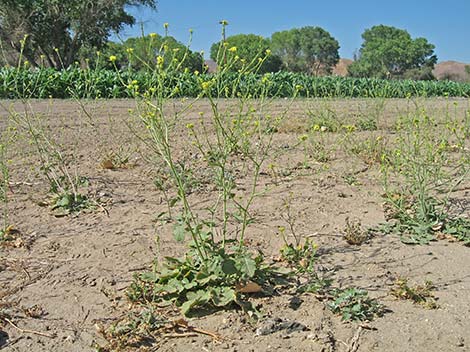 |
General: Black Mustard (Mutarda nigra) is an upright annual forb with many basal leaves and several flowering stalks. The basal leaves are elongate with 1 or 2 pairs of distinct lobes at the base of the blade (Sahara Mustard has many lobes). Upper leaves are reduced. The flowers are yellow with four petals, and the fruits are linear and held close to the stem. The plant dies after it flowers, leaving open, upright stalks that promote wildfire. Black Mustard is an uncommon component of disturbed desert vegetation communities. Around Las Vegas, look for this species in town and in disturbed roadsides and open fields. This is an invasive weed. If hikers and other visitors to the native habitats around Las Vegas see this species, please report it to the local land management agency. If you have this species on your private property, please consider eradicating it. This species is listed as a Noxious Weed in Michigan, but not in Nevada. |
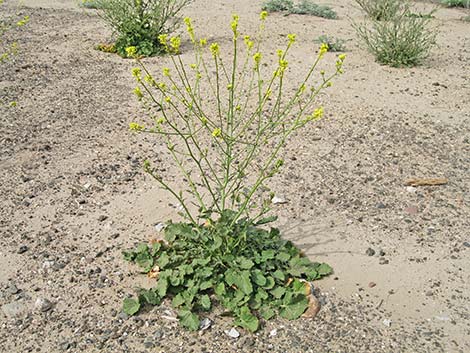 |
Family: Mustard (Brassicaceae). Other Names: Sinapis nigra, shortpod mustard. Formerly Brassica nigra. Plant Form: Basal leaves with upright flower stalks. Height: To about 6 feet. |
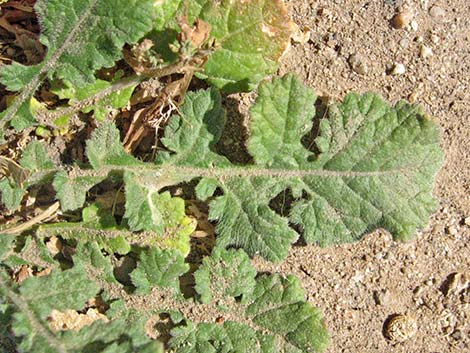 |
Stems: Branched, upper portions without hairs. Leaves: Basal leaves are elongate with 1 or 2 pairs of distinct lobes at the base of the blade. Upper leaves oblong to linear with the base tapered. Flowers: Blooms during early spring. Flowers clustered at the top of the flower stalks; petals 4, yellow, broad (several mm across). Fruits are erect, usually held close to the stem; to about 1-inch long. Seeds: Tiny, many per plant. |
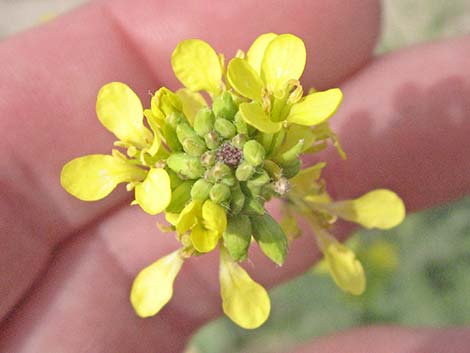 |
Habitat: Roadsides, fields, disturbed sites, grasslands, especially in coastal places with a mild winter climate. Elevation: To about 4,500 feet; usually lower elevations. Distribution: Throughout the US; native to Europe. Comments: Like Sahara Mustard, Black Mustard is adapted to fire and increases the fuel load available for fires, thus contributing to the conversion of native desert vegetation to an open grassland. |
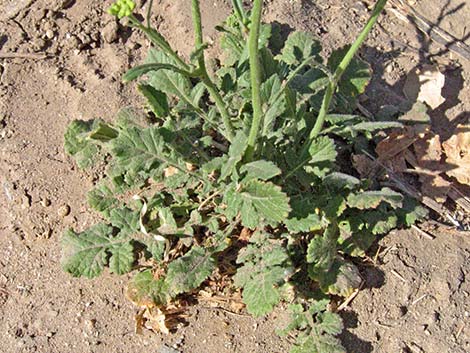 |
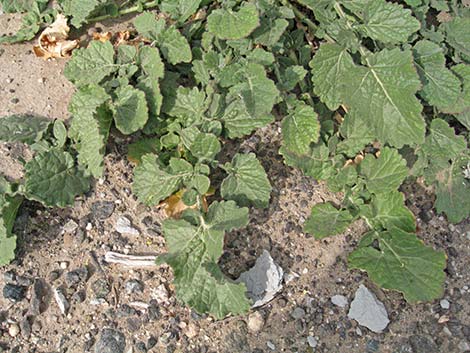 |
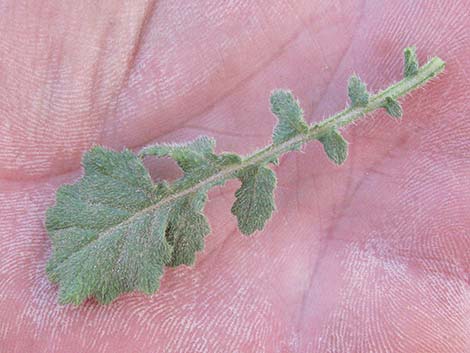 |
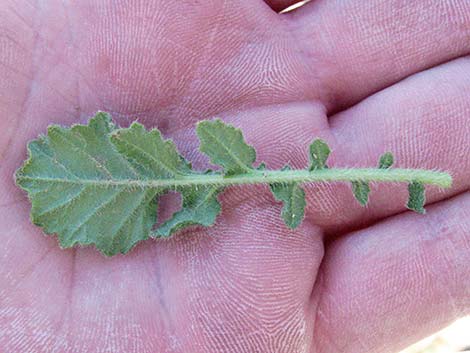 |
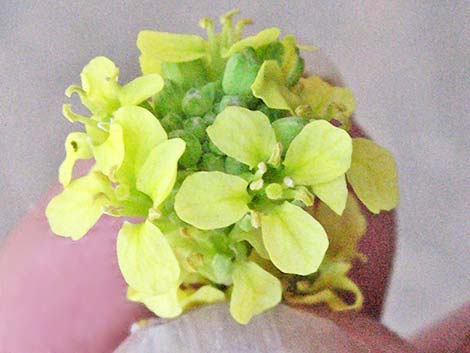 |
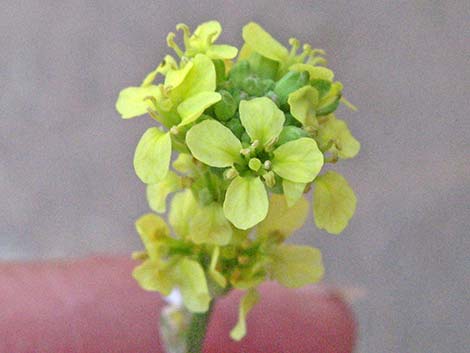 |
Note: All distances, elevations, and other facts are approximate. Names generally follow the USDA database.
![]() ; Last updated 240725
; Last updated 240725
| All Annual Forbs | Plant Species Index | Glossary | Copyright, Conditions, Disclaimer | Home |